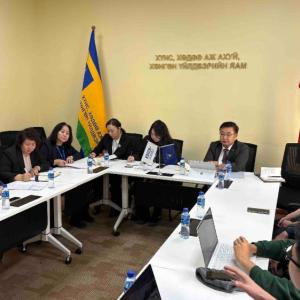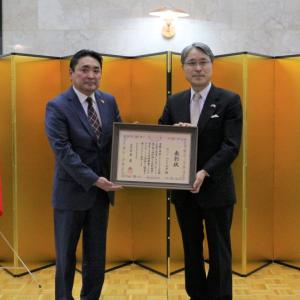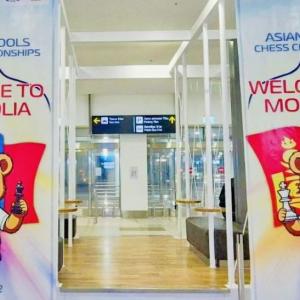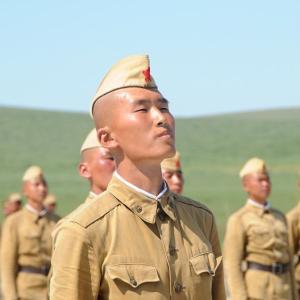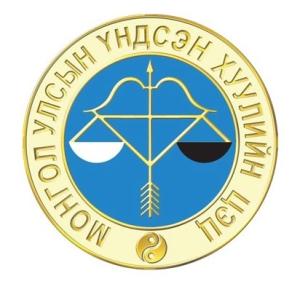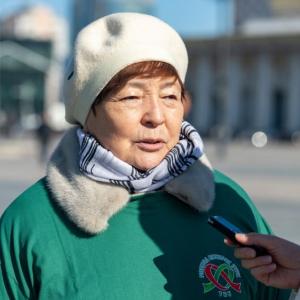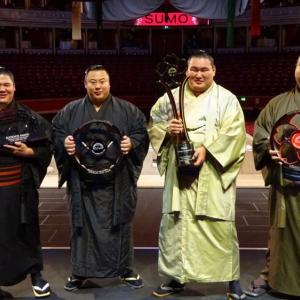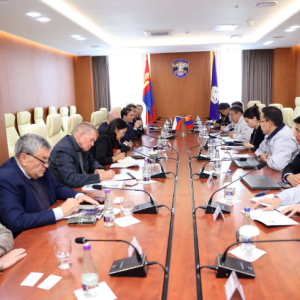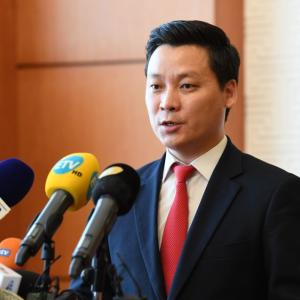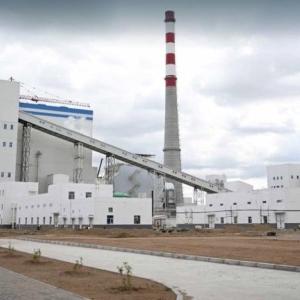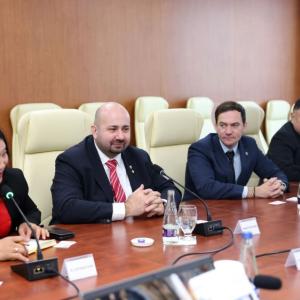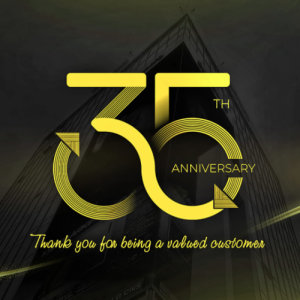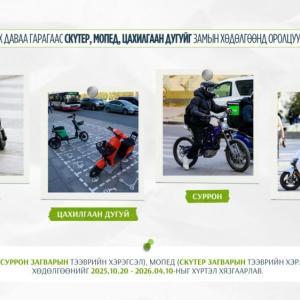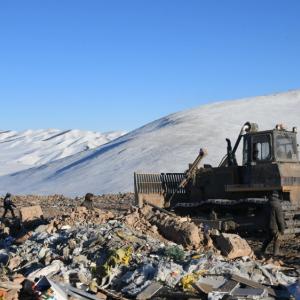Savior of Przewalski’s Horses – The Prague Zoo
The Mongol Messenger
Ulaanbaatar, March 5, 2023 /MONTSAME/.
On January 29th, we met with Mr. Miroslav Bobek, the Director of the Prague Zoo, in Hustain Nuruu. We discussed
the tragedy and eventual recovery of Przewalski's horses, the Prague Zoo’s ongoing
projects, and new initiatives being implemented by the zoo.
Mr.
Bobek is a zoologist who graduated from Charles University in Prague. Since
2010, he is serving as the Prague Zoo's director. In addition to being a
zoologist, journalist, publisher, and author, Mr. Bobek is also the creator of
numerous books, documentaries, and television shows about animals. He has also
won renowned science and wildlife conservation awards. To name a few of his
most recent accomplishments, he is in charge of initiatives such as the
reintroduction of Przewalski's horses to their native land, Mongolia, and the conservation
of gorillas in Cameron, Africa.
Under
his direction, the Prague Zoo set a new annual visitor record, and information
about rare and endangered animals became more widely available to the public. He
first visited Mongolia in 2000 to conduct studies on animal migration. The
President of Mongolia awarded Miroslav Bobek the “Medal of Friendship” in 2014
and the “Order of the Polar Star” in 2022 for his significant role in the
reintroduction of Przewalski's horses to Mongolia.
Miroslav
Bobek: "It's no accident that I became a zoologist, my grandfather was
a hunter and my mother was a natural science teacher. I believe that all of
this influenced me to choose a career related to the animal world."
The
fourth project to reintroduce Przewalski's horses to Mongolia will take place
in Eastern Mongolia
- The purpose
of our trip to Mongolia this time is to work in the new location chosen for the
reintroduction of Przewalski’s horses, as well as to meet with Mongolian
officials and discuss this new project. Przewalski’s horses were reintroduced
and are now reproducing in three other locations, Hustain Nuruu, Gobi’s “B”
territory, and Khomyn Tal. Currently, there are no Przewalski’s horses in
Eastern Mongolia. We chose Sumiin Khooloi in Khalkh Gol Sum of Dornod province
in Eastern Mongolia as the site of our fourth reintroduction project after
conducting in-depth fieldwork, biological research, and geographic analysis on
the distribution of the animals, the yield of plants, species, pastures,
topography, parasites, winter weather, and other factors. We are planning on
signing the last necessary documents with the Mongolian side soon. Afterward,
other important tasks, such as funding and transportation will begin. To start,
we are planning domestic transportation of Przewalski’s horses to the east of
Mongolia (the first transportation work from the Hustain Nuruu to Khalkh Gol is
scheduled to be finished by 2026), followed by transportation of a number of Przewalski’s
horses from the Czech Republic.
The majority of the funding will be provided by the Prague Zoo, and we'll coordinate efforts to secure additional funding from other sources. While in Mongolia this time, we met with the Minister of Environment and Tourism of Mongolia, the Minister of Food, Agriculture, and Light Industry of Mongolia, and the Governor of Dornod province. We conclude that the meetings were effective. They all warmly support the reintroduction of Przewalski’s horses in Dornod province. This project is anticipated to be advantageous to all parties.

The process of transportation
From
Prague to Khomyn Tal and to Takhiin Tal
-For
the past twelve years, our zoo has been actively working on the reintroduction
of Przewalski’s horses. Shortly after I was appointed as the director of the
zoo, I visited a center where horses are trained for transportation to other
locations; it was located 100 km from Prague. Two gates were there, one
containing mares and the other stallions. The director of the center informed
me that it was planned to transport these horses to Mongolia, but the
transportation was cut off at that time and it was unclear when it would
resume, so they were waiting. After learning about this, I told the director
that I will arrange the transportation of these horses, which took the director
by surprise.
There was
news that approximately 50% of the previously transported horses had passed
away due to severe weather conditions during those years. So I soon began
looking for an aircraft to complete the transportation work in the quickest
amount of time feasible. Because of our zoo's difficult financial status at the
time, we were unable to rent a commercial airplane. So we went to meet with the
General Staff of the Czech Armed Forces, explained our predicament to them,
asking if they might assist. They agreed to fly us there using one of their
aircraft. Petr Pavel, who was the Chief of General Staff of the Czech Armed
Forces at the time, was elected President of the Czech Republic yesterday (28th
of January). In May 2011, a military CASA aircraft flew the first Przewalski’s
horse mares to Mongolia and landed at the Khovd provincial airport. Four mares
were driven to Khomyn Tal from there in a car. The other mares were then
transported from Khovd airport to Bulgan airport, where they were then sent to
the "B" territory of the Gobi. Seeing these horses today thrive and
graze in the countryside makes us incredibly proud. I recall the most emotional
moment when we opened the crate and the Przewalski’s horses stepped out, with
happiness after many hours of work and a 20-hour aircraft flight to arrive in
Mongolia. We transported a total of 34 Przewalski’s horses to Khomyn Tal and
Gobi’s “B” territory between 2011 and 2019 via 9 different shipments. One of
our biggest accomplishments is this. Transportation is one thing, but the
support and assistance for them to live in the wild is the most crucial
component. We are therefore working on providing the preservationists with a
comfortable environment, transportation, and support for their research.
The
blood of the Przewalski’s horses from our Zoo is running through the bodies of
many horses in Mongolia...
-You
all might get surprised. There isn't a single horse that was born in the Prague
Zoo in Hustain Nuruu, where we are right now. There was one... but it is no
longer here.
However,
this does not negate the Prague Zoo’s contribution to the reintroduction of
Przewalski’s horses in Hustain Nuruu. Our zoo was involved in the projects from
the beginning by donating our horses, and the chosen horses were settled in
Mongolia. Hence, it can be claimed that the horses still carry a little amount
of the blood of the Prague Zoo horses because the majority of the horses from
the first generation to settle in Mongolia were from Prague. All of the horses
that our zoo sent to Mongolia were not born at the Prague Zoo; rather, they
were transported to Prague from various locations in Europe where horses are
found and were then chosen to be transported. For generations,
the horses in our Prague Zoo have been considered to be the healthiest and most
genetically fit. Hence, horses from our zoo have been selected from the very
beginning when Przewalski’s horses were first reintroduced to Mongolia, their
native land.
“Little
Mongolia” will open soon
May I
surprise you again? Right now there are not any Przewalski’s horses on the
territory of the Prague Zoo. Besides our Prague Zoo, five horses are placed in
another site, and thirty horses are in a center where horses are trained for
transportation to other locations. The reason for this is that we are currently
trying to build a "Little Mongolia" that will depict the steppes and
meadows of Mongolia in the area of the Prague Zoo where the Przewalski’s horses
used to live. In other words, the visitors, who are coming to see the horses
will not only learn about their history, their life in the wild, and their
biology, but they will also learn about the steppes and meadows of Mongolia, how
they were reintroduced to Mongolia and much more all in one setting. We believe
that this will present several opportunities to increase scientifically based
understanding of Przewalski’s horses while also promoting Mongolia and the
horses around the world.
To be
completely honest, our Prague Zoo does not rank among the best zoos in terms of
territory size, funding, animal population, or species diversity. Yet we do
rank in the top 10 zoos with the best living conditions for the animals.

Prague Zoo’s Przewalski’s horse stepping onto Mongolian
land. 2013.
The
Prague Zoo is a place that has contributed the most to the rescue of the
Przewalski’s horses, which were transported to Europe, from the danger of
extinction over the years, and is still taking a leading role in reintroducing
the horses to their homeland. Therefore, in 2021, the World Association of Zoos
and Aquariums awarded the WAZA Conservation Award to the Prague Zoo for
its "long-term contribution to the rescue of the Przewalski’s horses".
"It was a great honor for us" Mr. M. Bobek recalled.

Mr. Miroslav Bobek,
the Director of the Prague Zoo after receiving the WAZA Conservation Award.
2021
The
introduction of Przewalski’s horses to the Prague Zoo dates back to the 1930s.
In 1934, the zoo bought its first Przewalski’s horse from a wildlife dealer.
Subsequently, in 1959, the reintroduction of the horse to its native
land was initiated by the director of the zoo at that time, Professor Zdeněk
Veselovský and Yuri Wolf. After more than 30 years, this initiative became a
reality. Several Przewalski’s horses from the Prague Zoo were
among the Przewalski’s horses that were brought back to Mongolia in 1992.
Because the zoos in Prague and Munich housed the healthiest and most
genetically fit horses in Europe.
Mr. M. Bobek noted that, along with the reintroduction projects, the Prague Zoo has been involved in the protection of the Mongolian Saiga antelope and the Mongolian wild Bactrian camel in recent years, and is providing financial assistance to implement projects.
B. Dulamdorj
 Ulaanbaatar
Ulaanbaatar









